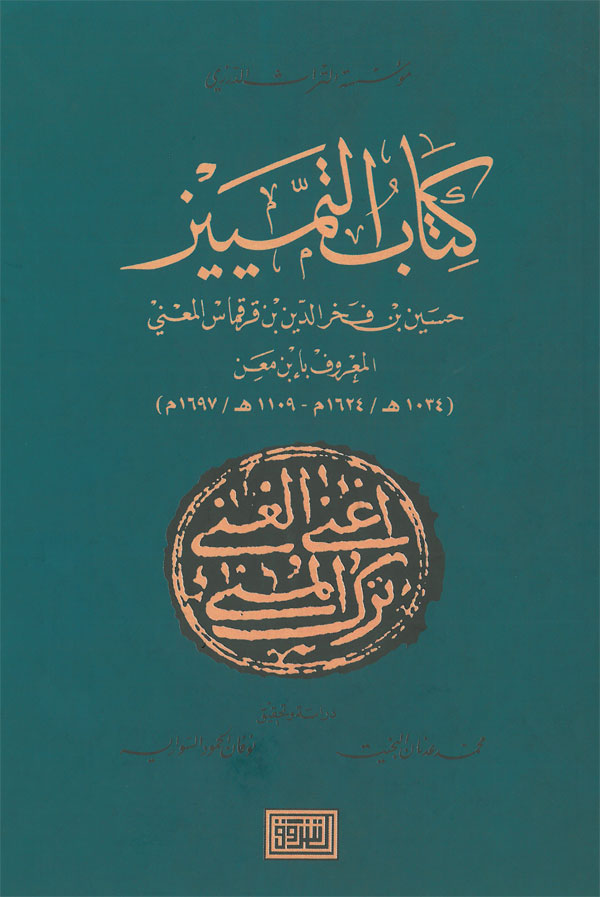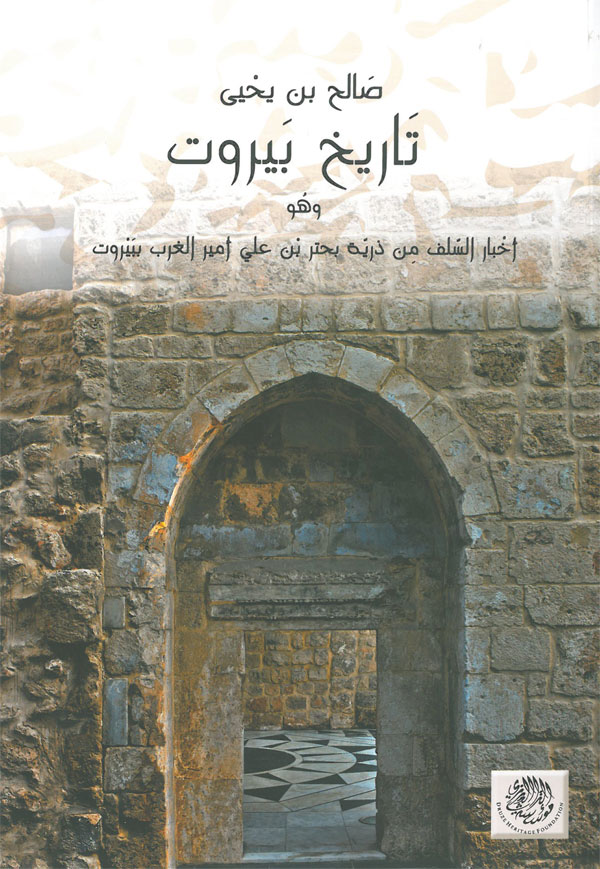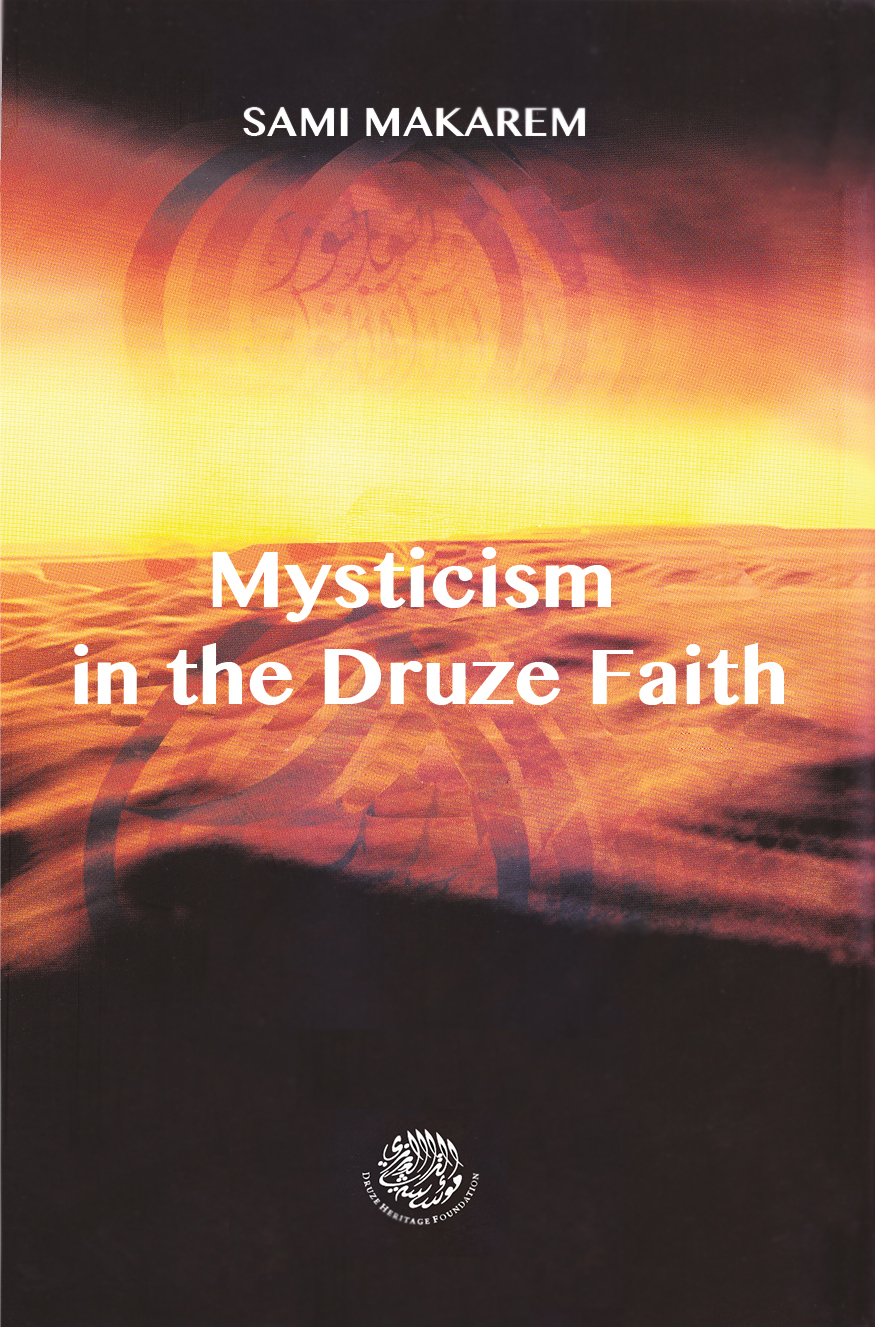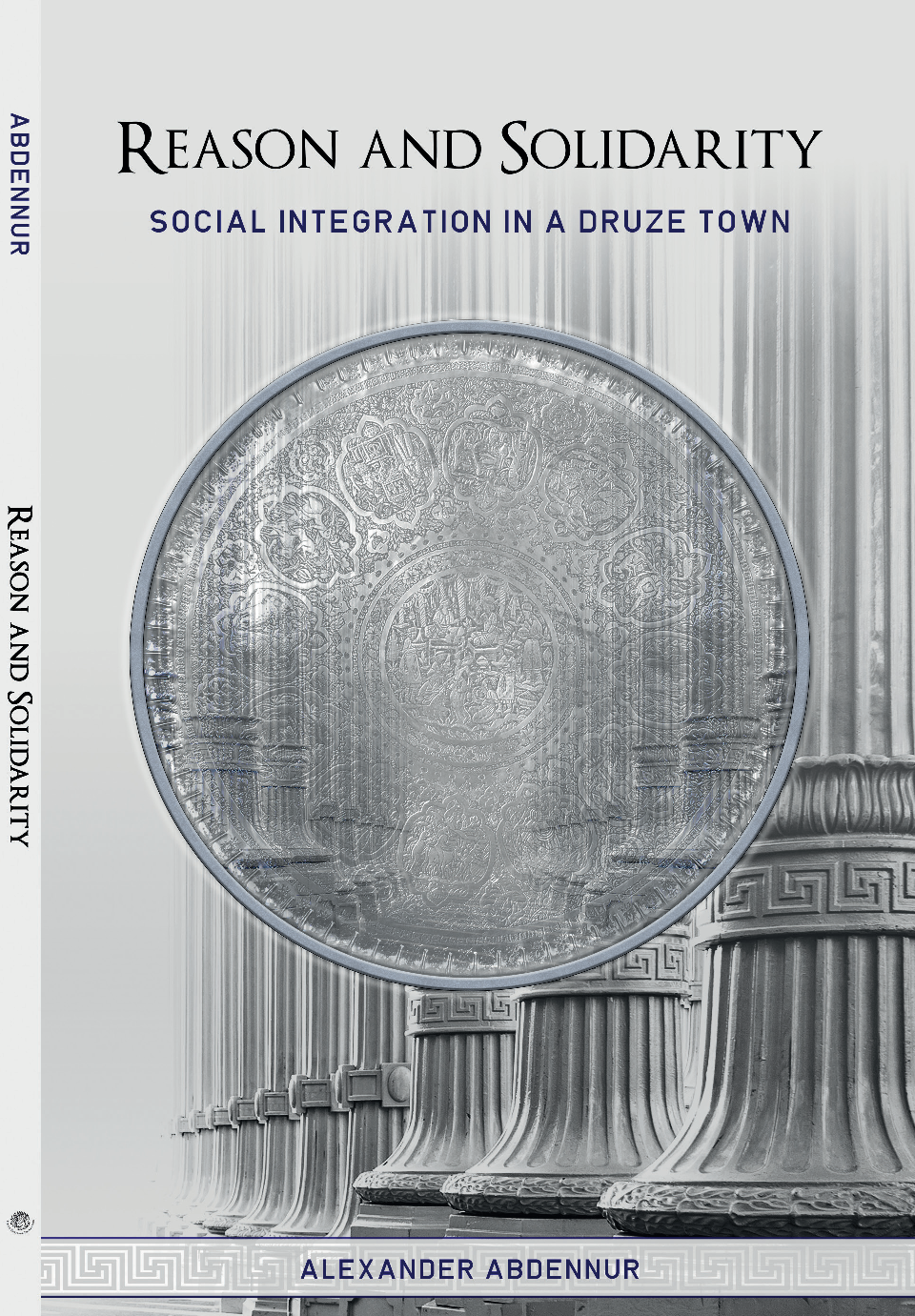ABOUT US
Establishment
The Druze Heritage Foundation (DHF) was established in 1999 in London, UK, on the initiative of Mr. Salim Kheireddine.The Foundation is an independent, apolitical institution whose aims are the study and preservation of Druze culture, history and lore and the dissemination of information on all matters relating to the Druze in their Arab homelands and abroad. Deeply rooted in the varied and multi-religious Arab culture of their Middle Eastern homelands, the Druze are at the same time part of a transnational society, represented by highly adaptable and law-abiding immigrant communities abroad. It is our hope that the activities of the Druze Heritage Foundation will contribute toward constructive dialogue and serve to link the diverse cultures of the world.
The work of DHF involves:
Research and publication
Collection and collation of oral traditions
Compilation of literary and documentary material
Sponsorship of academic studies
Organization of conferences and workshops
BOARD OF TRUSTEES
Mr. Salim Kheireddine (president)
Mr. Walid Abi Mershid
Mr. Faysal al-Khalil
Dr. Raouf al-Ghusayni
H. E. Mr. Marwan Kheireddine
Mr. Wassim Kheireddine
Mr. Nadim Makarem
WHO ARE THE DRUZE
Introduction
THE Druze faith, came into being at the beginning of the eleventh century A.D. Although its headquarters were in Cairo,
this faith thrived in Mount Lebanon and the Anti-Lebanon range, in Northern and Southwestern Syria, in and around Damascus and in northern Palestine.
Ironically, it was not a leader of the faith but a heretic-Nashtakin adDarazi- whose name became eponymous for the movement.
Since the sixteenth century some of the Druze, especially in Lebanon and northern Syria, have been migrating to Mount Hawran in southern Syria.
Today there is a large Druze community in this area, which is now called Jabal ad-Duruz “the Mountain of the Druzes”. Following this migration,
some Druze, especially from Jabal ad-Duruz, settled in Jordan. The Druze are thus currently centered in Lebanon, Syria, Palestine and Jordan.
In the nineteenth century some Druze from Lebanon and Syria started to settle in the Americas, Australia and West Africa.
About forty thousand Druze now live in Latin America, especially in Venzuela, Brazil, Argentina and Mexico,
with smaller communities in Chile and Colombia. There are also some Druze in the West Indies and Philippines.
Several thousand others reside in the United States of America and in Canada.
The Druzes have organized associations which are active in strengthening the ties among the Druze and others of Arab origin who live abroad.
Many of them have reached important positions in the political, social, economic and cultural sectors of the countries in which they have
settled.
In the Middle East, the Druzes, although a minority, have filled an important and sometimes a leading role in the political and social life of the area and
in its economic and cultural affairs.
During the second half of the sixteenth century and the first half of the seventeenth century the Druze Emir of the Manid dynasty, Fkhruddin II,
was the first to establish in the Lebanon a state practically independent from Ottoman rule. He may be regarded as the founder of modern Lebanon.
At one time this state extended almost as far as Anotalia in the north; in the east it included Palmyra and in the south reached as far as
the Sinai Peninsula. In this state, Druze, Sunnis, Shi’a, Christians and Jews lived in relative harmony with each other.
Mount Lebanon was known at that time as the Mountain of the Druzes. Prior to the Druze dynasty of Ma’n, a considerable part of Lebanon
also enjoyed political, social and spiritual harmony under the Druze Emirs of the house of Tanukh. The Tanukhids were noted for their frequent
victories in struggles against the Crusaders and then the Mongols.
The Druze have always been noted for their resistance to foreign rule. This, together with their minority status, was a cause of their many wars against Turkish and,
later, French domination. These wars in which they showed distinguished military ability, together with their previous wars against
the Crusaders and the Mongols, have given the Druze a collective feeling of pride in and a reputation for courage, valor and chivalry.
Over the last thaousand years ,the druze have played an active role in the political , social and cultural development of the arab east .indeed, wharever
in the world they have lived ,thay made significant contributions and maintained a sense of solidarity as well as an attitude of openness towards oyther communities and cultures.
Beginnings of the Movement
The Druze originated historically from the Isma’ili faction of Shi’a Islam. Paying allegiance to a spiritual Imam other than the ruling
political Caliph of the Sunni Abbasids, the Isma’ilis were obliged to operate secretly, to go “underground”, as it were. Also, their esoteric
beliefs, which differed greatly from the main body of prevailing Islamic doctrine, forced them not to divulge their beliefs to outsiders.
The Isma’ili movement came into the open when the Isma’ili Imam, Al-Mahdi Billah, assumed power, after escaping Abbasid persecution in Syria and fleeing to North Africa,
where he founded the Fatimid Caliphate in A.H. 297 {A.D. 909}.
After al-Mahdi, the Imamate was assumed by al-Qa’im bi-Amrillah, then by al-Mansur Billah, and then by al-Mu’izz li-Dinillah. Al-Mu’izz conquered Egypt from the Ikhshidids,
the vassals of the Abbasids, in A.H. 358 {A.D. 969}. He founded the city of Cairo and made it the capital of the Fatimid State.
In A.H. 359 {A.D. 970}, one year after the founding of Cairo, he built the mosque of al-Azhar which became one of the greatest centers of teaching.
After al-Mu’izz, the Fatimid Imamate was assumed by al-Aziz Billah, and after al-Aziz by al-Hakim bi-Amrillah. As heads of a Shi’a state,
the Fatimids promoted allegorical interpretation of revelation according to man’s needs and his readiness for esoteric knowledge.
They were noted for their patronage of learning, philosophy, the sciences, literature and the arts. The newly built city of Cairo successfully
competed with the two other centers of civilization in the world at that time, Baghdad and Constantinople.
Besides founding al-Azhar, which became the main university of the Islamic world, the Fatimids also established Dar al-Hikma {The House of Wisdom},
known also as Dar al-Ilm {The House of Knowledge}. This Dar al-Hikma was established by the Fatimid Caliph
Imam al-Hakim bi-Amrillah in A.H. 395 {A.D.1005}. It was connected with the Royal Palace and contained a huge library and many conference rooms.
Lectures were given in both al-Azhar and Dar al-Hikma, and in many other centers of learning in Cairo and other places in the Fatimid Empire.
Scholarly activities were one of the main interests of the state. Cairo became a center of scientists, philosophers, theologians,
men of letters and scholars.
In such an intellectual atmosphere, the Druze movement started in the year A.H. 408 {A.D. 1017}, during the reign of the sixth Fatimid Caliph and Imam, al-Hakim bi-Amrillah.
It was a result of intellectual ferment within the various philosophical and theosophical schools that had emerged in Islam.
The movement was headed by Hamza ibn Ali, assisted by four functionaries: Isma’il ibn Muhammad at-Tamimi, Muhammad ibn Wahb al-Qurashi, Salama ibn Abd- al-Wahhab as-Samirii
and Ali ibn Ahmad at-Ta’I (better known as al-Muqtana Baha’uddin). Hamza ibn Ali is considered in the Druze Scriptures to be the leader of the
Druze Movement. His teachings and those of his four disciples are thought to be irrevocable and final as far as the Druze faith is concerned.
When the Middle East fell successively under the rule of the Seljukids, the Ayyubids, the Mamluks and then the Ottomans, they were all foreign, in one way or another,
to the intellectual development of Islamic civilization. Being strict Sunni Muslims, these rulers were unsympathetic to any ideas
foreign to traditional Islam. In fact the Druze experienced a revival in the philosophical and theological aspects of their doctrine
only when they were under autonomous rulers, such as the Tanukhid and the Ma’nids who were themselves Druze. Such rulers, though they
were theoretically vassals of other dynasties, ruled internally with a relatively free hand. It was under such circumstances that Druze scholars,
such as al-Amir Jamaluddin Abdallah at-Tanukhi (1417-1479), ash-Shaykh Zaynuddin Abdul-ghaffar Taqiyyuddin (died ca. 1528) and ash-Shaykh al-fadil
Muhammad Abu Hilal (1579-1640), flourished.
(This section is taken from the writings of Dr. Sami Makarem).
A Historical Overview
It was during the period of Crusader rule in Syria (1099-1291) that the Druze first emerged into the full light of history,
in the Gharb region of the Shuf mountains. As redoubtable warriors serving the Muslim rulers of Damascus against the alien invaders,
the Druze were given the task of keeping watch over the Crusaders in the seaport of Beirut, with the aim of preventing them from making
any encroachments inland. Subsequently, the Druze chiefs of the Gharb placed their not inconsiderable military experience at the disposal
of the Mamluk rulers of Egypt (1250-1516); first, to assist them in putting an end to what remained of Crusader rule in coastal Syria and,
later, to help them safeguard the Syrian coast against Crusader retaliation by sea.
(In 1425, a Druze contingent from Beirut and the Gharb joined in a major Mamluk naval expedition against Cyprus,
where the last remnant of Crusader rule in the Near East was reduced to subservience).
In return for the valuable services rendered by the Druze of the Gharb and other parts of the Shuf mountains,
the Mamluks appear to have allowed them the freedom to manage their internal affairs with minimal interference from the central government in Cairo,
or its Syrian agency in Damascus.
The history of the Gharb Druze during the Crusader and Mamluk periods is known from the work of two remarkable Druze historians,
Salih ibn Yahya (d. ca. 1435) and Ahmad ibn Hamza ibn Sibat (d. 1523), no such documentation being available regarding the Druze
of other Syrian regions. It appears, however, that the Druze of Hauran were among the peasants and tribesmen of that area who fought
and decimated the forces of the Second Crusade, as they advanced from Palestine to attempt the capture of Damascus in 1147.
Notably, the Druze placed their military resources at the disposal of the Sunni Muslim state against the Crusaders at a time when their
community was being singled out for special condemnation by the Sunni religious establishment on account of its beliefs.
Unlike the Mamluks, the Ottomans who succeeded them as the rulers of Syria in 1516 were not prepared to allow the Shuf Druze
the customary local freedoms which they had come to regard as established rights. Consequently, the sixteenth and seventeenth centuries
were to witness a succession of armed Druze rebellions against the Ottomans, countered by repeated Ottoman punitive expeditions against
the Shuf in the course of which the Druze population of the area was severely depleted and many villages laid waste. These military measures,
however, severe as they were, did not succeed in reducing the local Druze to the required degree of subordination.
This led the Ottoman government to agree to an arrangement whereby the different nahiyes (districts) of the Shuf would be granted in
iltizam (that is, in fiscal concession) to one of the region’s emirs, or leading chiefs, leaving the maintenance of law and order in the area,
and the collection of its taxes, in the hands of the appointed emir. This arrangement was to provide the cornerstone for the privileged status
which ultimately came to be enjoyed by the whole of Mount Lebanon in Ottoman Syria, Druze and Christian areas alike.
Remarkably, the Shuf Druze had taken up arms against Ottoman rule when the Ottoman Empire was at the peak of its power.
Starting from the middle decades of the nineteenth century, the Hauran Druze of Jabal al-Duruz whose
earlier history remains obscure due to a lack of documentation-put up a similar resistance to determined
efforts on the part of the Ottoman state to tighten its weakened control over Syria. Later, in the mid-1920s,
these same Hauran Druze rose in armed rebellion against the French shortly after France, emerging victorious from the First World War,
was allotted its mandate over Syria and Lebanon. This Druze revolt was to trigger a general Syrian insurrection against the French Mandate,
lasting for nearly three years.
Historically, the close relations between the Druze and Christians of the Lebanon date back to the sixteenth century,
when the Druze of the Shuf, whose livelihood depended on silk production, first opened their country to large-scale Christian-and
principally Maronite-peasant migration from the north, to help produce the silk. To encourage this Christian immigration,
the leading Druze chiefs of the area made generous donations of land to Maronite and other Christian monastic orders for
the building of monasteries and churches; tradition has it that the Druze villages where the Christian newcomers settled came
to be called 'honoured villages' (diya musharrafa). Meanwhile, as the Druze emirs holding the iltizam of the Druze area gained
control over the adjacent Maronite nahiye of Kisrawan, the management of the affairs of Mount Lebanon developed into a close Druze-Maronite partnership.
Having the advantage of numbers and of privileged external connections, the Maronites eventually started to gain the upper hand in this partnership.
This development appears to have elicited little Druze concern in its initial stages but, before long, tensions began to rise.
Incited and openly backed by France, the Maronite clerical and feudal leaderships began, from the 1840s, to seek complete dominance over
the whole of Mount Lebanon, causing the Druze to feel dangerously threatened on their very home ground. When the Druze reaction, in full force,
finally came in 1860, its violence was such that the Christian parties who had provoked it fled the scene,
leaving the defenceless Christians of the Druze regions to their fate.
While the manner in which the Druze fell upon their terrified Christian neighbours in 1860 in the Shuf,
Wadi al-Taym and elsewhere-went beyond the justifiable limits of self-defence,
what it represented at the time was an outburst of pent-up feelings of hostility provoked by decades of equally unjustified Christian provocation.
Over a century later, during the course of the multi-faceted Lebanese civil war of 1975-1991,
Christian provocation was even more pronounced and included indefensible attacks on isolated and unprotected Druze communities
in different parts of Mount Lebanon (notably, in the Matn and Shahhar districts). This was a decisive factor in eliciting the violence with
which the Druze attacked Christians living in their midst in 1983,
devastating their villages and forcing a massive Christian exodus from the Shuf. In both instances,
the Druze recourse to violence represented a departure from the historical Druze norm,
which had emphasized peaceful coexistence on the basis of equitable partnership and mutual goodwill.
However, to maintain this norm, the community had first to attend to its survival, which is why, at various
turning points in their history, the Druze felt compelled to resort to arms when they perceived their community to be in danger.
This compulsion was the same regardless of whether the perceived danger came from a neighbour or an external power,
or whether the odds were with the Druze or overwhelmingly against them.
Proud of their communal identity and solidarity,
the Druze have also been staunchly attached to their native soil;
the same Druze families have lived in the same towns and villages, if not the same houses,
for centuries, with hardly an interruption. Attachment to community and territory, however,
has never been a bar to active Druze involvement in the affairs of the broader societies to which they belonged;
nor has it obstructed the Druze commitment to the wider Arab identity that they share with other Muslim and Christian
communities of the Near East. Moreover, though socially conservative, the Druze have exhibited a remarkable openness to Western cultural
influences in modern times.
During the nineteenth and early-twentieth centuries, Lebanese Druze chiefs welcomed and offered their protection
to British and American missionaries arriving to establish schools and colleges in the Shuf mountains, as they had in Beirut;
Furthermore, by sending their own sons and daughters to these teaching institutions,
they set the example for others. As a result, the spread of modern education began particularly early among
the Druze, no less than among Lebanese Christians. In due course, Druze educated at home or abroad came to be
counted among those playing leading roles in the social, economic and cultural advancement of Lebanese society,
as of the broader Arab society, thereby placing their community in the vanguard of Arab development.
All of these considerations make the heritage of the Druze community a
subject worthy of serious academic investigation.
(This section is written by Dr. Kamal Salibi).
DHF Publications


-
 كتاب التمييز
كتاب التمييز
-
 التقية في الاسلام
التقية في الاسلام
-
 سيرة الأديب سعيد تقي الدين
سيرة الأديب سعيد تقي الدين
-
 المؤرخ سليمان ابو عز الدين
المؤرخ سليمان ابو عز الدين
-
 المجاهدون الدروز في عهد الانتداب
المجاهدون الدروز في عهد الانتداب
-
 مشيناها خطىً "سيرة عارف النكدى
مشيناها خطىً "سيرة عارف النكدى
-
 العرفان في مسلك التوحيد-الدرزية
العرفان في مسلك التوحيد-الدرزية
-
 سجّل: أنا رشيد طليع
سجّل: أنا رشيد طليع
-
 سلطان باشا الأطرش والثورة السورية الكبرى
سلطان باشا الأطرش والثورة السورية الكبرى
-
 الأحوال الشخصية للطائفة الدرزية
الأحوال الشخصية للطائفة الدرزية
-
 نيكولا ساركوزي
نيكولا ساركوزي
-
 الأمير مجيد أرسلان
الأمير مجيد أرسلان
-
 الشيخ تقي الدين ابن تيمية
الشيخ تقي الدين ابن تيمية
-
 فن العمارة والزخرفة في الإمارة التنوخية
فن العمارة والزخرفة في الإمارة التنوخية
-
 تطور قضاء الموحدين الدروز عبر التاريخ
تطور قضاء الموحدين الدروز عبر التاريخ
-
 بشير قاسم جنبلاط
بشير قاسم جنبلاط
-
 تاريخ بيروت
تاريخ بيروت
-
 حوران في الوثائق العثمانية
حوران في الوثائق العثمانية
-
 الموحّدون الدروز: الواقع والتصوّرات
الموحّدون الدروز: الواقع والتصوّرات
Announcements
Friday, November 25, 2016
The Druze Heritage Foundation Research Awards
The Druze Heritage Foundation is pleased to announce a Research Award Program offering a
number of graduate research awards to doctoral students in selected universities who are
writing or planning to write their dissertations on topics relating to the history, culture and
society of the Druze. The awards are
meant to encourage research in these areas by providing financial support (up to $10,000) to
students as they seek to fund their research needs or travel. Awards will be allocated by the
Foundation's Academic Advisory Committee upon the recommendation of the applicant's
dissertation adviser.
Applications may be received at any time and should include the following documents:
1. Cover letter by the applicant
2. Applicant's CV
3. Graduate academic transcript
4. Dissertation outline
5. Letter of recommendation by the dissertation adviser
The Foundation expects to receive a copy of the dissertation subsequent to the granting of
degree. The Foundation may later consider publishing the dissertation.
The Druze Heritage Foundation is a charity registered in the United Kingdom whose
principal function is to promote the scholarly study of the Druze, their history, society and
culture and related topics. The Foundation has thus far published over 25 titles in the last
several years, in both English and Arabic. (The books may be consulted in our website
www.druzeheritage.org). The Foundation has also organized and funded two scholarly
conferences in Oxford, U.K., in collaboration with the Middle East Centre, Saint Anthony's
College, Oxford University.
Award applications should be emailed to druzeheritage@hotmail.com
For additional information please call: 00961 1 739750
THE DRUZE FAITH
(by Dr. Sami Makarem)
Image Gallery
-
.jpg)
Shrine of Jobe, Niha el Chouf
مقام النبي ايوب في نيحا الشوف -
.jpg)
Statue of Prince Fakhruddin II
تمثال الامير فخر الدين المعني -
.jpg)
The Irfan Tawhidiya Institution, Simkaniya
مؤسسة العرفان -
.jpg)
Fakhruddin Mosque, Deir el-Qamar
جامع فخر الدين في دير القمر -
.jpg)
Interior view of Fakhruddin Mosque, Deir el-Qamar
جامع فخر الدين من الداخل في دير القمر -
.jpg)
The Joumblat Palace, Moukhtara
قصر آل جنبلاط في المختارة -
.jpg)
Baakline Community Center
بيت بعقلين -
.jpg)
National Library, Baakline
المكتبة الوطنية في بعقلين من الداخل -
.jpg)
Shrine Sitt Cha’awaneh
مزار الست شعوانة -
.jpg)
Ain w zein Hospital in Chouf
صورة جوية لمستشفى عين وزين في الشوف -
.jpg)
Shakib Arslan Library in Choueifat
مكتبة الامير شكيب ارسلان في الشويفات -
.jpg)
“Al Hawta” in Khalwat el Bayyada in Hasbaya
الحوطة في خلوات البياضة في حاصبيا -
.jpg)
Khalwat el Bayyada in Hasbaya
خلوات البياضة في حاصبيا -
.jpg)
“Al Hawta” in Khalwat el Bayyada in Hasbaya
الحوطة في خلوات البياضة في حاصبيا -

Khalwat el Bayyada in Hasbaya
خلوات البياضة في حاصبيا -
.jpg)
Painting of a Druze Sheikh by Mustafa Farroukh, courtesy of H.E. Marwan Kheireddine
صورة الشيخ: شيخ درزي من رسم الفنان مصطفى فروخ، تقدمة معالي مروان خير الدين
ACADEMIC ACTIVITIES
Conferences
A: The Druze: Realities and Perceptions, a conference held by DHF in collaborations with the Middle East Centre of St. Antony’s College, Oxford in October 2001.
The following papers were presented at the Conference and later published by DHF in a book with the title “The Druze: Realities and Perceptions" The Druze: Realities and Perceptions” edited with an introduction by Professor Kamal Salibi:
- Preface by Salim Kheireddine
- The Druze Faith by Sami Makarem
- Druze Religious Texts by David Bryer
- Al-Sayyid Jamal al-Din al-Tannukhi as a Druze Reformer by Naila Kaidbey
- Aspects of Social Structure: There are no Free Floating Druze by Fuad Khuri
- Druze Identity in the Middle East: Developments and Tendencies in the Modern Druze Communities since the 1960s by Bernadette Schenk
- Druze Women: Ideal and Reality by Intisar Azzam
- The Druze British Connection in 1840-1860
- The Subordination of the Hawran Druze in 1910: The Ottoman Perspective
- Jabel Druze as Seen by Rustum Haydar by Kamal Salibi
- Druze Shaykhs, Arab Nationalists and Grain Merchants by Michael Provence
- Fuad Hamza as Observer of the Kingdom of Saudi Arabia by Leslie Mcloughlin
- The Druze and Arabism by Eyad Abu Chakra
- Essay: Remarks on Some Communities with Druze like Affinities by Amir Taheri
- Coping with Crisis: Druze Civic Organization during the Lebanese Civil War by Judithe Pamer Harik
B. Druze Perspectives, a conference held by DHF in collaboration with the Middle East Center, St. Anthony’s College, Oxford in October 2004. The following papers were presented at the conference:
- The Druze Community in Jordan by Ahid Qontar
- Muhammad Malik al-Ashrafani:A Seventeenth Century Druze Historian by Naila Kaidbey
- Law and Communal Identity in Mount Lebanon in Light of the Dispute over the Taqqiy al-Din Family Waqf, 1909-1912 byAbdulrahim Abu-Husayn and Engin Akarli
- Rabie Jaber and His Novel Yusuf al-Inglizi by Kamal Salibi
- The Druze Musical Heritage: An Overviewby Kathleen Hood
- Sufism in the Druze Faith by Sami Makarem
- Arabic Calligraphy from al-Hakim to Makarem by Sami Rifai
- Common Intellectual and Social Characteristics of the Batini’s in Iran and the Druze by Mohammad Rida Wasfi
Book Fairs
DHF has participated regularly in the Beirut International Arab Book Fair which is held annually. The Fair has served as an opportunity to display DHF publications on a wide scale and enhance contacts with publishers, authors and a variety of visitors.
Visitors
DHF organized a visit to Lebanon for Dr. Maria Kastrinou of Brunel University, U.K. Dr. Kastrinou had lived in the Druze town of Jaramana, a suburb of Damascus, where she prepared her Ph.D dissertation in anthropology and has since maintained a sustained interest in research on Druze life and culture. She made an exploratory visit to Lebanon in December 2015 as part of a research project on Druze institutions in Lebanon. Her visits included the Druze Community Center in Beirut, social welfare organizations, and educational and health institutions in the Shouf (Irfan Schools, Ain Wazein Hospital), and she crowned her visit with a visit to Hasbayya and the Khalwat al-Bayyada, the most sacred of Druze religious locations. Dr. Kastrinou is expected to return to Lebanon to conduct her research.







